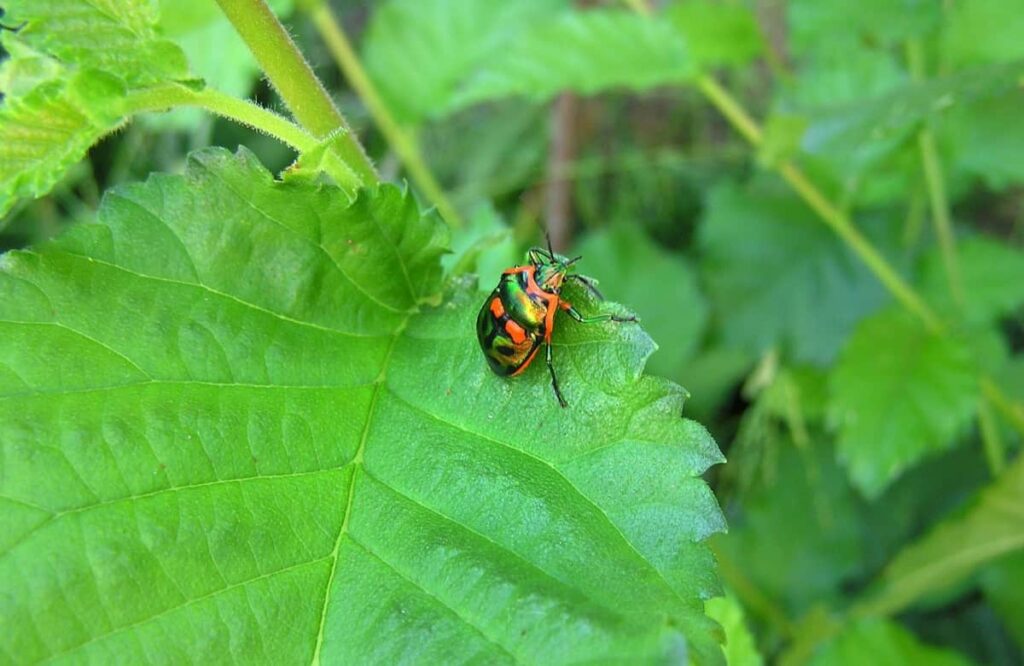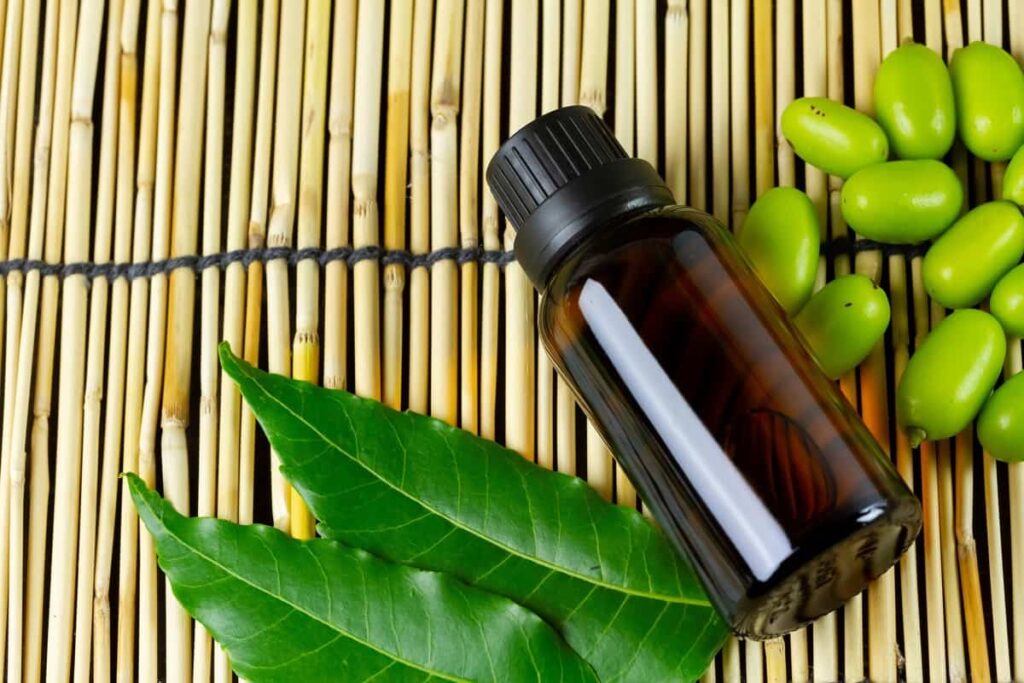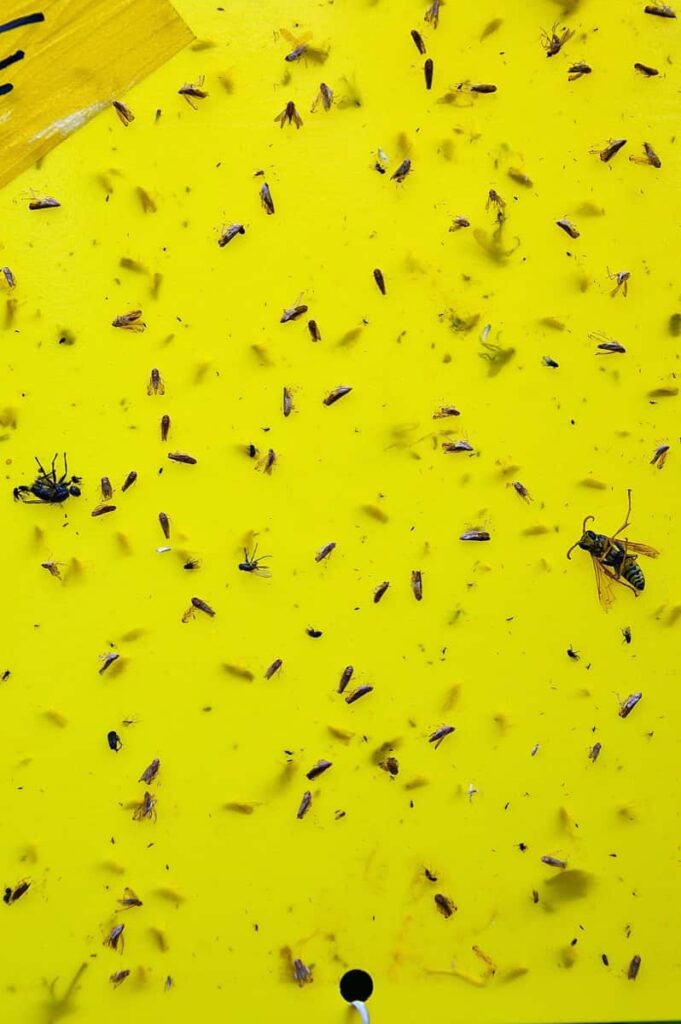Gardening is a peaceful and enjoyable hobby, but problematic garden pests can quickly ruin it. It can be challenging to keep your garden pest-free without the proper knowledge. You are concerned about slow-moving insects and other pests that can cause significant damage to your vegetables, plants, herbs, and flowers.

While chemical treatments are available, many people prefer natural alternatives. This article will provide step-by-step instructions on controlling garden pests with simple home remedies. This article discusses effective yet natural ways to keep bugs at bay and protect your garden. You’ll also get tips on how to prevent pest infestations in the future. The proper knowledge can effectively protect your garden without harsh chemicals.
Introduction to garden pest control
Natural home remedies are one of the simplest and most effective ways to keep pests out of your garden. For example, creating a homemade concoction of garlic and chili peppers is an all-natural way to keep harmful bugs away. You can also use neem oil to eliminate garden pests and clean up any debris or dead plants that could attract them. Companion planting can also be a great way to keep pests away from your garden.
Planting certain flowers or herbs alongside your vegetables and fruits can help deter certain unwanted pests. For example, marigolds are known to ward off aphids and other bugs. Remove any standing water on your property, and keep your garden free of debris and overgrown weeds. You can also use a natural pesticide like diatomaceous earth or neem oil to help repel pests. Using these simple methods, you can save your garden from garden pests and enjoy your harvest.
Terrace gardening, home garden, kitchen garden, and indoor plants: Effective pest control solutions
Choose a natural insecticide for home use specifically suited to controlling the pest you want to address for a targeted approach to specific pests. Sand, wood ashes, or diatomaceous earth (naturally occurring soft rock) sprinkled around plant stems can help deter slugs, according to Family Handyman. Coating plants can control whiteflies with a mixture of lemon-scented dish soap and water (1 tablespoon of soap per 1 gallon of water). Spraying plants with a natural insecticide containing oil can be an effective aphid control method.
Step-by-step instructions on controlling garden pests with simple Organic home remedies
Controlling garden pests with simple home remedies can be a natural and effective way to protect your plants. Here are some step-by-step instructions you can follow:
- Identify the pest: The first step in controlling garden pests is accurately identifying the pest causing the problem. It will help you determine the most appropriate treatment method.
- Determine the severity of the infestation: If the infestation is severe, it may be necessary to use a more aggressive treatment method. However, if the infestation is minor, a less aggressive approach may be sufficient.
- Use physical barriers: One of the simplest and most effective ways to control garden pests is to use physical barriers such as row covers, screens, or netting. These barriers can prevent pests from reaching your plants and can also help to protect your plants from extreme weather conditions.
- Use natural predators: Encouraging natural predators, such as ladybugs, lacewings, and birds, can help control garden pests. These predators can help to keep pest populations in check. They can also help to maintain a healthy ecosystem in your garden.
- Use home remedies: Several home remedies can control garden pests. For example, you can use a mixture of water and dish soap to create a homemade insecticide spray. You can also use Garlic or hot pepper sprays to deter pests.
- Practice good garden hygiene: Keeping your garden clean and well-maintained can help to prevent pest infestations. It includes removing any dead or diseased plant material and regularly inspecting plants for signs of pests.
- Monitor your plants regularly: Regularly inspecting them for signs of pests and damage can help you catch infestations early before they become too severe. It will allow you to take action to control the pests and protect your plants.
It’s also important to consider the potential impact on beneficial insects and the environment when choosing a pest control method.
Top 15 effective organic home remedies for garden pests
Garlic and water spray for garden pest control
Ingredients
- Four cloves of Garlic, minced
- 1 cup of water
- One teaspoon of dish soap
Instructions
- In a blender, blend the minced Garlic and water until the Garlic is thoroughly minced.
- Pour the mixture into a spray bottle and add the dish soap.
- Shake the spray bottle well to mix the ingredients.
- Spray the mixture on the leaves and stems of your plants to repel pests such as aphids, whiteflies, and mites.
- Repeat the process every few days to keep pests at bay.
- If you notice any adverse effects on your plants, dilute the mixture with more water or discontinue use.
In case you missed it: Key Rules for Kitchen Gardening: How to Start from Scratch, Plan, the Principles, Ideas, and Tips

Note: This spray is not harmful to humans or pets but may cause a strong odor. If you are sensitive to strong odors, use a smaller amount of Garlic in the mixture or dilute it further with more water. Mint is also recommended in combination with Garlic to control other pests such as Ants and armyworms, Cabbage worms, Borers of fruits, Leafhoppers, Maggots, Moths, Nematodes, Powdery Mildew, Snails and slugs, Termites
and Whiteflies.
Chili pepper and water spray for garden pest control
Ingredients
- 1-quart water
- 4-6 hot chili peppers (such as jalapeno or habanero)
- One tablespoon of dish soap
In case you missed it: Key Rules to Start a Butterfly Garden from Scratch: Butterfly Gardening Layout, Design for Home, and Backyard

Instructions
- Roughly chop the chili peppers and place them in a blender with the water. Blend until the peppers are fully broken down.
- Strain the mixture through a fine mesh sieve or cheesecloth to remove any solids.
- Add the dish soap to the pepper water and stir.
- Pour the mixture into a clean spray bottle.
- To use, spray the mixture directly onto the foliage of plants where pests are present. Be sure to coat the underside of the leaves as well thoroughly.
- It is a protection that gives you reasonable control over spiders, caterpillars, mice, rats, and ants, among other things.
- Repeat the application every 3-4 days until the pests are gone.
Note: This spray is not harmful to beneficial insects such as bees and butterflies, but it can be irritating to the skin and eyes, so be sure to wear gloves and protective eyewear when handling the mixture. Also, avoid spraying it on plants you plan to consume, as chili peppers can affect the taste.
Soap and water spray for garden pest control
- Fill a spray bottle with water. The amount of water will depend on the bottle size, but you’ll want enough to cover the plants you spray.
- Add a few drops of liquid soap dish to the water. The soap will help the spray stick to the pests and plants.
- Shake the bottle to mix the ingredients.
- Test the spray on a small area of the plant before applying it to the entire plant. It will ensure that the spray does not harm the plant.
- Spray the mixture on the pests and any areas of the plant where pests are likely to be hiding. Be sure to coat the pests thoroughly.
- To eliminate harmful insects or pests such as mites, aphids, thrips, whiteflies, and leafhoppers.
- Repeat the process every few days until the pests are gone.
- Discard any leftover spray after use, as it may become less effective.
In case you missed it: Homemade Fertilizer Recipe with Egg Shells: How and When to Apply in the Garden
Note: This spray is unsuitable for edible plants, as the soap may leave a residue on the produce. It is best used on ornamental plants and those that are not consumed.
Neem Oil for Garden Pest Control
Ingredients
- Neem seeds or neem oil
- A blender or food processor
- A fine mesh strainer or cheesecloth
- A clean, empty bottle or container
- Water
In case you missed it: Terrace Gardening ideas for Home in India: For Vegetables, Fruits, Flowers, and Herbs

Instructions
- If you use neem seeds, grind them into a fine powder using a blender or food processor. If you are using neem oil, skip this step.
- Add 1 cup of ground neem seeds or one tablespoon of neem oil to a blender or food processor.
- Add 1 cup of water and blend until the mixture is smooth.
- Strain the mixture through a fine mesh strainer or cheesecloth to remove any solid pieces.
- Pour the neem oil mixture into a clean, empty bottle or container.
- To use the neem oil, mix 1-2 tablespoons of the oil with 1 quart of water. Spray the mixture onto your plants, covering the leaves and stems thoroughly. Repeat every 7-10 days or as needed.
- Store the remaining neem oil in a cool, dry place away from direct sunlight. It will last up to 6 months.
- Plant on which neem oil spray can give effective results are most plant species can be treated with neem oil. Fruit trees, ornamental houseplants, vegetables, herbs, and nuts can all be sprayed with neem oil.
Note: Spray solutions containing neem oil are effective against aphids, various mites, fungus gnats, mealybugs, tomato hornworms, and beetles. The fungicidal properties of neem oil aid in destroying fungal diseases such as powdery mildew, leaf spot, tip blight, and scab.
Dust mite oil repellent for garden pest control
Ingredients
- 1 cup water
- One teaspoon of white vinegar
- One teaspoon of dish soap
- Ten drops of essential oil (such as eucalyptus, peppermint, or tea tree)
Instructions
- Combine the water, vinegar, and dish soap in a small spray bottle.
- Add the essential oil and shake well to mix.
- Spray the solution onto plants and soil in your garden to repel dust mites and other pests.
- Repeat every few days or as needed.
Note: Always test the solution on a small area of the plant before applying it to the entire plant to ensure it does not cause any damage. Do not apply the solution to plants that are wilting or stressed, as it may harm them further.
Apple cider vinegar fruit fly trap for garden pest control
Ingredients
- A small, shallow dish or bowl
- Apple cider vinegar
- A few drops of dish soap
- Plastic wrap or aluminum foil
Instructions
- Fill the shallow dish or bowl with about 1/4 inch apple cider vinegar.
- Add a few drops of dishwashing soap to the vinegar. The soap will help break the vinegar’s surface tension, causing the fruit flies to sink to the bottom of the dish when they land on it.
- Cover the dish with plastic wrap or aluminum foil, securing it with a rubber band or tape. Make sure to leave a few small holes in the top of the covering to allow the fruit flies to enter the dish.
- Place the dish where you have noticed fruit flies, such as near a compost bin or in your garden.
- Fruit flies are attracted to the vinegar and enter the dish through the holes in the covering. Once they land on the surface of the vinegar, they will be unable to escape and eventually drown.
- Dispose of the trapped fruit flies and refill the dish as needed to continue trapping and eliminating fruit flies from your garden.
Beer trap for garden pest control
Ingredients
- A shallow container or tray, such as a pie pan or small plastic tub
- Beer or other fermented beverage
- A stick or dowel
- A piece of cardboard or paper
Instructions
- Fill the shallow container with about an inch of beer.
- Place the stick or dowel in the container’s center, ensuring it is balanced and stable.
- Place the cardboard or paper over the top of the container, covering the opening.
- Make small holes in the cardboard or paper, about the size of a pencil eraser.
- Place the beer trap in your garden near the plants targeted by pests.
- The pests will be attracted to the beer and crawl through the holes to get to it. They will then fall into the beer and drown.
Note: Check and refill the trap regularly, as the beer will evaporate over time. Also, dispose of any pests caught in the trap properly.
Companion planting in the garden effective pest control
- Plants that repel pests: Some plants have natural chemicals that can repel pests. For example, planting marigolds near tomatoes can help to deter tomato worms and other pests.
- Plants that attract beneficial insects: Some plants, such as dill, fennel, and yarrow, can attract beneficial insects like ladybugs and lacewings, which can help to control pests in the garden.
- Plants that confuse pests: Planting a variety of different plants nearby can confuse pests and make it more difficult for them to locate their preferred food source.
- Physical barriers: Some plants, such as beans and peas, can be used to create physical barriers around other plants, which can help to deter pests from reaching them.
- Diversionary planting: Planting decoy plants can distract pests from other garden plants. For example, planting lettuce near cabbage can help distract slugs and snails from the cabbage.
Note: Overall, companion planting is a simple and effective way to manage pests in the garden without the need for chemicals.
Diatomaceous earth in garden effective pest control
Diatomaceous earth A natural substance made up of fossilized algae called diatoms. This fine, white powder is safe for humans and animals but deadly to pests. When applied to plants and soil in a garden, diatomaceous earth works by physically cutting and dehydrating the exoskeletons of insects, causing them to die.
Diatomaceous earth controls various garden pests, including aphids, thrips, slugs, and snails.
How to use diatomaceous earth in Pest control
To use diatomaceous earth in the garden, sprinkle it over the soil and plants where pests are present. It is best to apply it early in the morning or late in the evening when the plants are not in direct sunlight, as the heat can cause the powder to lose its effectiveness. It is essential to reapply the diatomaceous earth every few days or after it has been exposed to heavy rain or watering.
Note: It is a natural, chemical-free alternative to traditional pest control methods and can be used in organic gardening.
Yellow sticky traps for garden pest control at home
- Cut a piece of yellow construction paper or cardstock into a rectangular shape. The size will depend on the size of your garden and the pests you are trying to control.
- Cover the entire surface of the paper with a thin layer of petroleum jelly. It will make it difficult for insects to escape once they land on the trap.
- Place the sticky trap in your garden where pests are commonly found. It could be near plants prone to pests or areas where you have previously noticed pests.
- Monitor the traps regularly and dispose of them when insects are too whole. It is essential to dispose of the traps properly to avoid attracting more pests.
- Repeat the process as needed to maintain control over pests in your garden.
In case you missed it: India Flower Planting Calendar: Month-wise Garden Sowing Chart, Dates Guide for Winter, Summer, and Rainy Season
Note: It is highly effective in vegetable and flower gardens and field crops like cotton and mustard. Yellow sticky trap is most commonly used to control insects like Aphids, white fly scales, and leaf miners.
Coffee grounds for garden pest control
- First, start by brewing a pot of coffee as you usually would.
- Once the coffee is brewed, strain out any large grounds or beans and set aside.
- Next, spread the coffee grounds evenly over the soil in the areas of your garden where you want to deter pests.
- You can also mix the coffee grounds with water to create a spray and apply it directly to the leaves of plants to repel pests.
- Repeat this process every few days or as needed to keep pests at bay.
- Remember that coffee grounds can also benefit plants as they can add nutrients to the soil, so be sure not to overuse them.
- Additionally, be mindful of the type of coffee you use, as some may contain additives or flavors that could harm your plants. It is best to stick with plain, organic coffee for your garden pest control.
bananas and tin foil for garden pest contol
- Cut a piece of tin foil large enough to wrap around a banana.
- Peel the banana and wrap it tightly in the tin foil, covering it completely.
- Place the wrapped banana in areas of your garden where you have seen pests, such as slugs or snails.
- Leave the wrapped bananas in place for a few days. The foil will reflect light and heat and deter pests from coming near the bananas.
- After a few days, remove the wrapped bananas from the garden and dispose of them. Repeat the process as needed to keep pests at bay.
Note: This method is not guaranteed to eliminate pests from your garden, but it can be an effective deterrent. Practicing good garden maintenance and using multiple methods to control pests is always essential.
Handpicking for garden pest control
Handpicking for garden pest control involves physically removing pests from plants by hand. It can be done by searching for and locating pests on the plants and then picking them off and disposing of them. This method is adequate for small infestations or targeting specific pests that are easy to spot and remove. It is a natural and chemical-free method of pest control. It is beneficial for gardens that are certified organic. However, it may be less effective for larger infestations or pests that are harder to spot and remove.
Natural Predators for garden pest control
Natural predators for garden pest control refer to the use of animals or insects that naturally prey upon and control pest populations in the garden. These can include birds that eat insects, such as sparrows, robins, and blue jays, or beneficial insects, such as ladybugs and lacewings that feed on aphids and other plant-damaging pests.
Using natural predators as a means of pest control can be an effective and environmentally friendly way to maintain a healthy and productive garden. Natural predators in the garden need to provide them with suitable habitats, such as nesting boxes for birds and plants that attract beneficial insects.
- Budget Friendly Sheep Shed Ideas: Cheap and Low-Cost Tips
- How Much Do Cattle Farmers Make: Revenue Streams in Cattle Farming
- Management Pests and Diseases in Your Cotton Field
- Sheep Farming Business Plan for Beginners
- Aquaponic Farming at Home: A Step-By-Step Guide
- Profitable Village Farming Business Ideas in 2024
- High-Yield Aquaculture: Fast-Growing Fish for Farming
- Effective Fish Pond Construction Techniques for Beginners
- Irrigation and Water Management in Pineapple Farming
- Blossom to Harvest: Mastering Flowering and Pollination in Papaya Farming
- Pig Fattening Essentials: From Selection to Sale for Beginners
- Raising Wagyu Cattle: A Complete Guide for Premium Beef Production
- Soil Types and Their Water Holding Capacity
- Optimizing Irrigation Schedules for Coconut Groves for Enhanced Yield
- Espresso Your Garden: Coffee Grounds for Healthier Acid-Loving Plants
- The Best Soil Mix for Snake Plants: How to Mix Your Own Snake Plant Soil
- Green Thumb Success: Expert Tips for Cultivating Greenhouse Beans All Year Round
- Bloom All Year Round: The Ultimate Guide to Indoor Hyacinth Care
- Eco-Friendly Gardening: How to Make Liquid Fertilizer from Kitchen Waste
- Ultimate Guide to Grow Anise in Pots: Explore Seed Propagation to Harvesting
- Guide to Raising Chester White Pigs: Discover Breed Facts to Growth Management
- Mastering the Elegance: The Ultimate Guide to Weeping Cherry Tree Care, Planting, and Maintenance
- Ultimate Guide to Planting Garlic in Grow Bags: Growing Strategies for Beginners
- How to Fix Spider Plant Leaf-Related Problems: Natural and Organic Remedies
- 10 Reasons Why Your Tulsi Plant is Shedding Leaves: Home Remedies and Solutions
- Optimizing Growth and Yield: The Advantages of Palm Bunch Ash Fertilizer
- Utilizing Neem Oil Extract as a Natural Pesticide for Hydrangea
- From Soil to Harvest: Various Ways in Which Farmers Can Use AI Tools
- Steps to Encourage and Induce Citrus Flowers: A Comprehensive Guide
- How to Fix Snake Plant Leaf-Related Issues: Natural and Organic Remedies
- Transform Your Garden into a Fragrant Oasis with Raat Ki Rani (Night Blooming Jasmine)
- Discover the Ideal Chicken Breeds for Philippine Farms
- How to Create a Poultry Egg Farm Business Plan for Profits
- Grow Lemon Cucumbers Like a Pro: Insider Techniques for Bountiful Yields
- Ultimate Guide to Caring for Your Pink Princess Philodendron: Tips for Thriving Variegation
- Areca Nut Profit Per Acre: Calculating Yield and Cost of Cultivation


